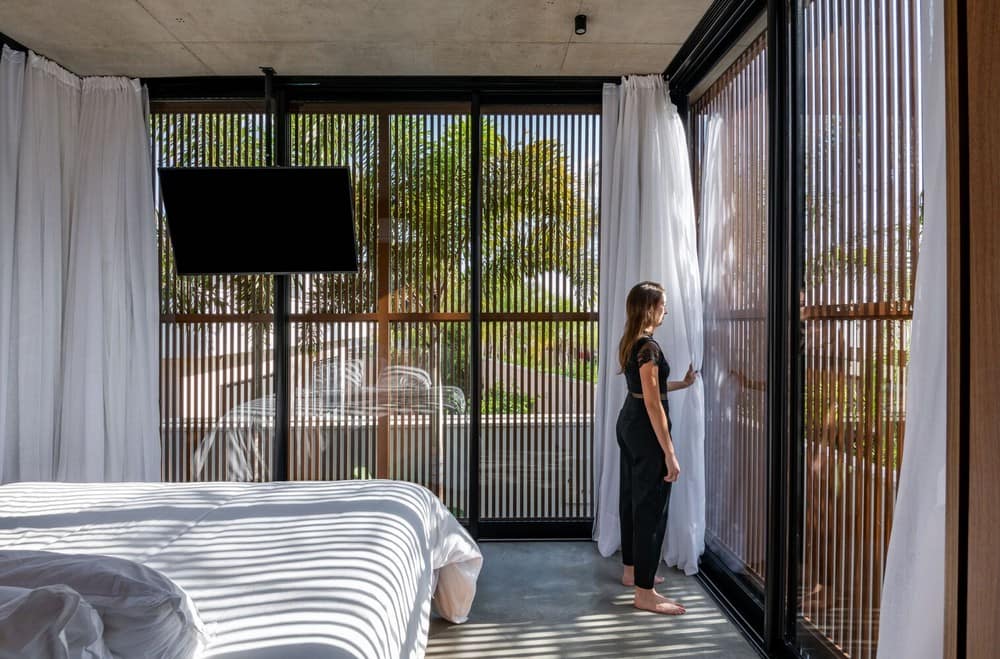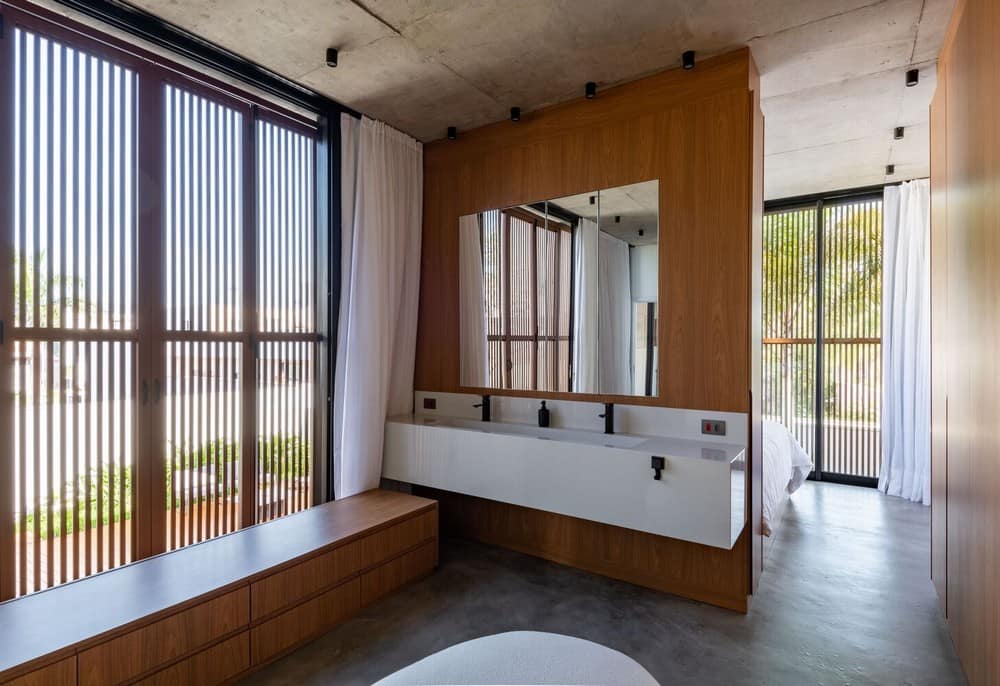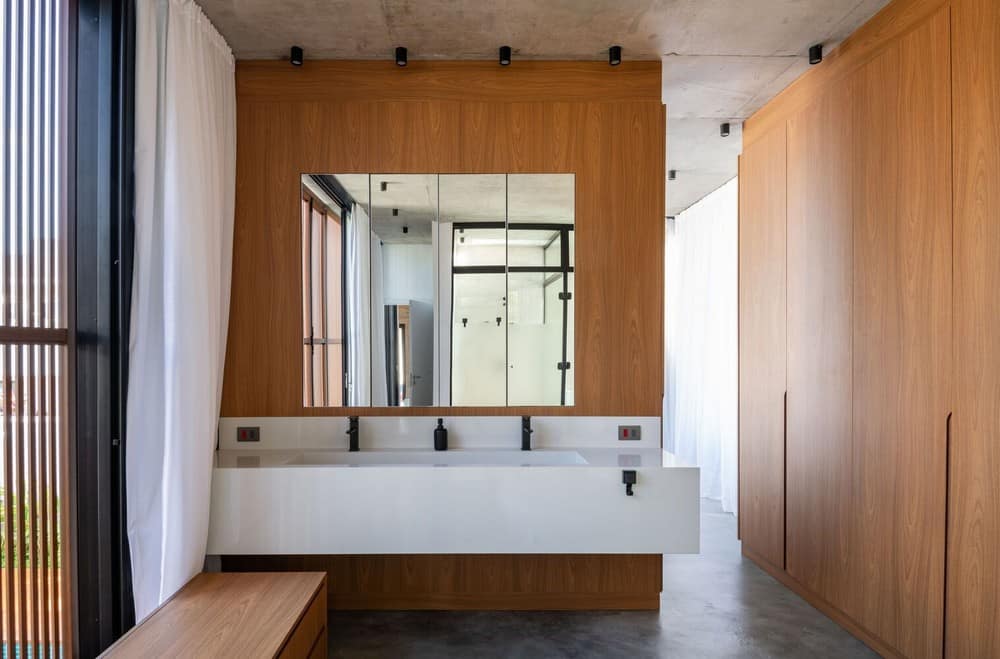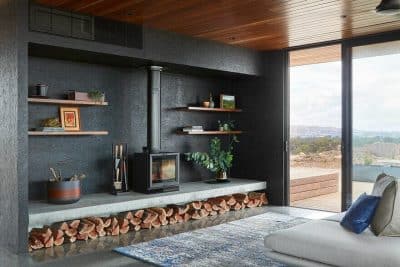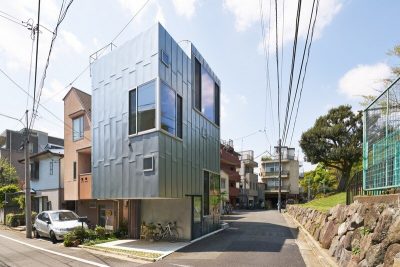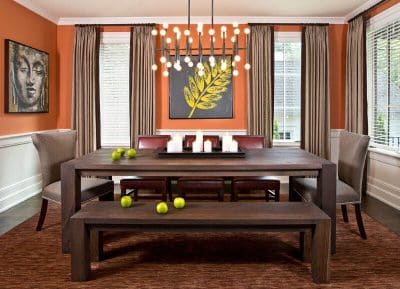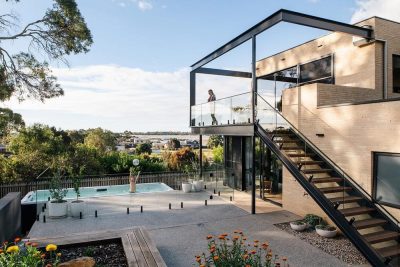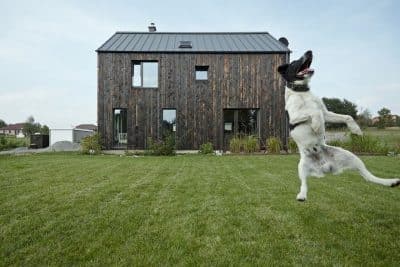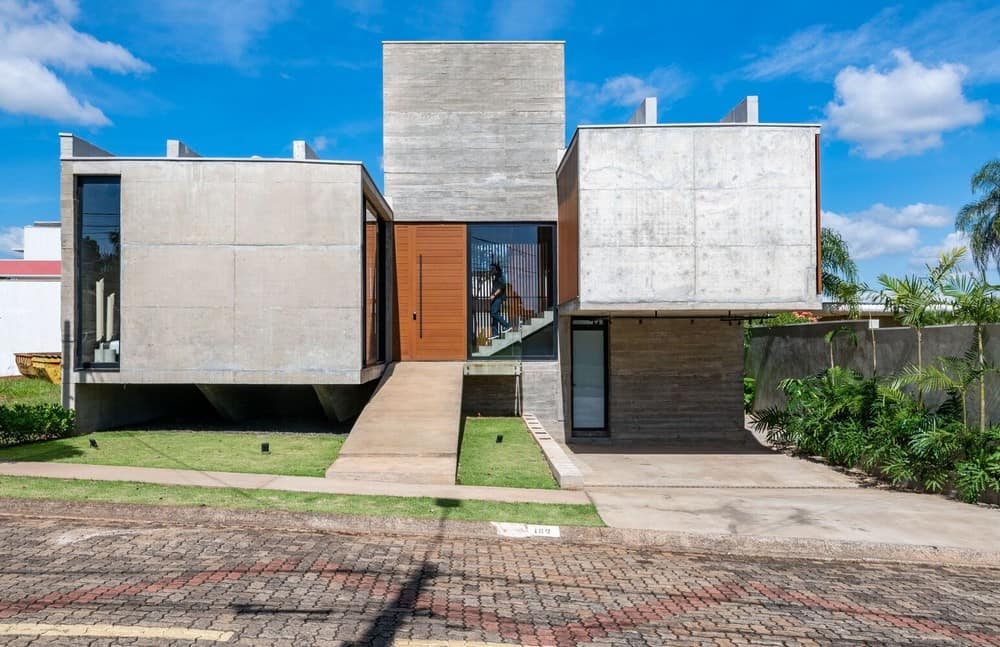
Project: Araraquara House
Architecture: Caio Persighini Arquitetura
Lead Architect: Caio Persighini
Project Team: Laisi Fassini, Bruna Cair, Felipe Orocini
Structural Design: Eng. Rodolpho Maia
Landscaping: Angela Bonancin
Constructor: Ailton Felipe de Oliveira
Location: Araraquara, Brazil
Area: 2885 ft2
Year: 2022
Photo Credits: Favaro Jr.
From the beginning, there was a discussion about the possibility of building a two-story for Araraquara Patio House. However, there was a constant concern about maintaining an open area, a free space. This concern was always present, and in a way, the concept of the patio was already implicit from the start of the project.
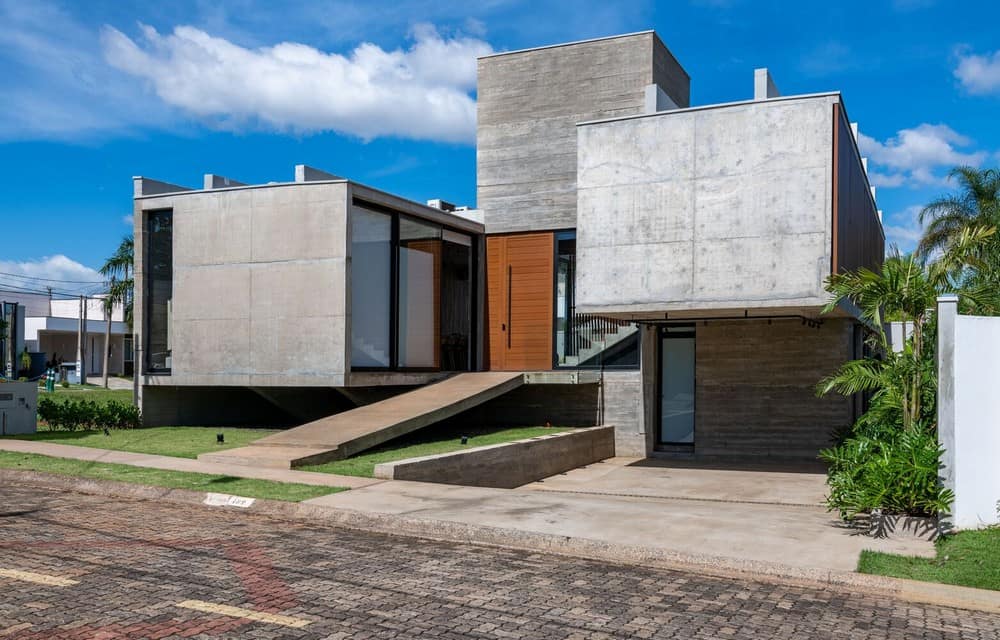
The couple, generous and receptive, were always open to discussing the project, allowing me the freedom to think, conceive, and develop the architecture according to my vision. They allowed the project to flow, letting the architecture express itself freely.
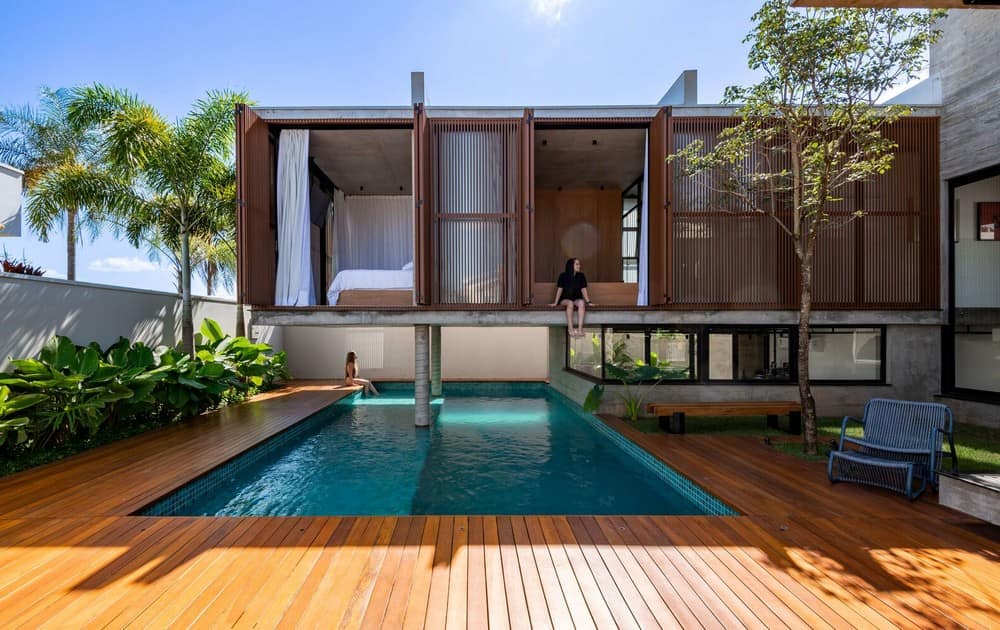
There were no restrictions or limitations on what they wanted. The program of needs included a spacious living room, kitchen, integrated gourmet area, three suites, a living room, laundry room, and a peculiar detail: a brewery in the house.
In the beginning, we explored some ideas and studies that were not yet the project itself, but they served to address important issues and allowed them to express themselves more extensively.

However, there was a crucial moment when I had an insight into the house, and this highlights the importance of client trust and the freedom given for creation. The insight was to take advantage of the terrain’s topography in favor of the project. The plot was wider than usual in the region and had a slight slope that could be beneficially used. Considering the limits of the condominium, it was possible to work with this terrain feature. Thus, the project took advantage of this slope, dividing the house into different levels: the second floor, the semi-basement, and the social ground floor. This conception was only possible thanks to the freedom of discussion with the clients, who had no prejudices or preconceived ideas. They were extremely open to discussing the house’s architecture and generous in trusting the potential of our studio.
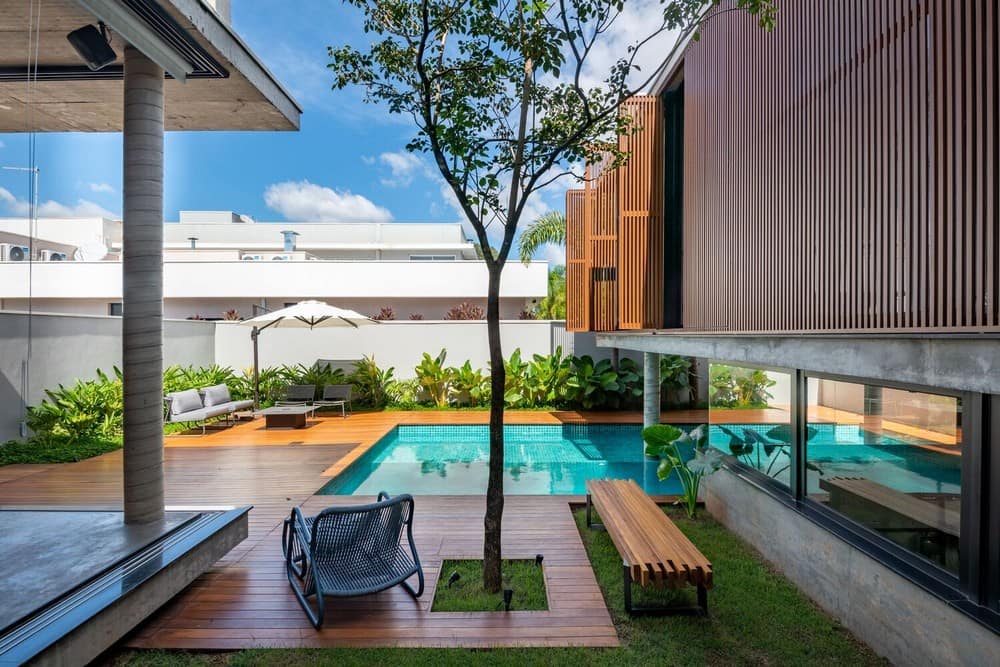
The project evolved until we reached a conception that everyone agreed was ideal for the house. After that, we started refining the details, such as the sizing and location of the spaces. Then, we developed the interior design project for the house.
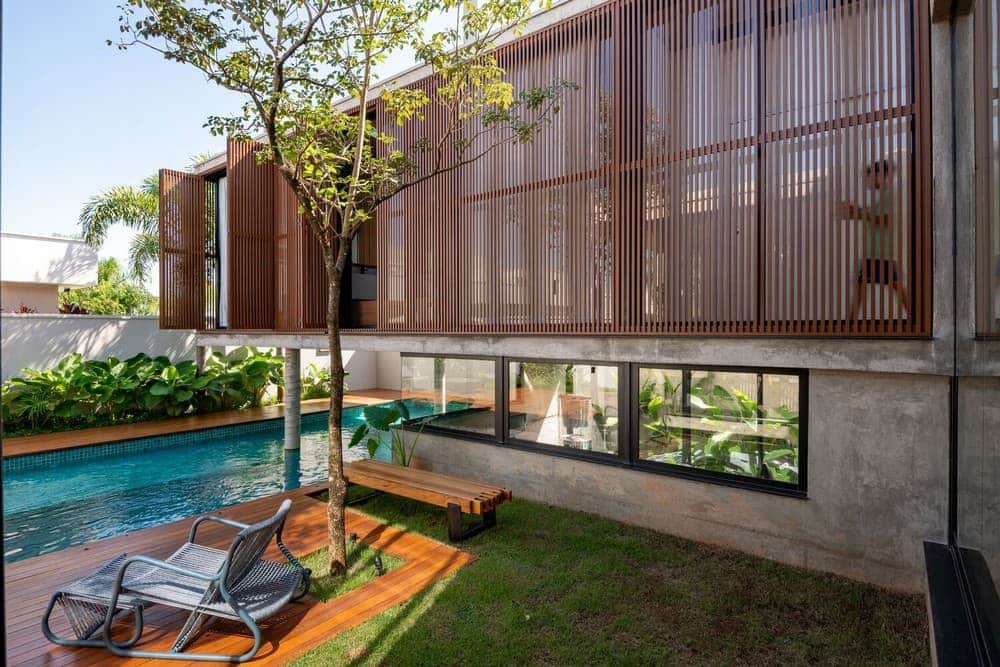
The crucial moment was when we effectively incorporated the reading of the terrain into the project’s discussion. Initially, we had a somewhat superficial reading of the terrain, only considering its size. We had not stopped to question other perspectives of the plot, independent of the house. It was at that moment that we deconstructed the idea of simply building a floor above the ground. The question arose: why not take advantage of the gentle slope and the width of the terrain? That was the decisive moment when the terrain defined the architecture of the house.
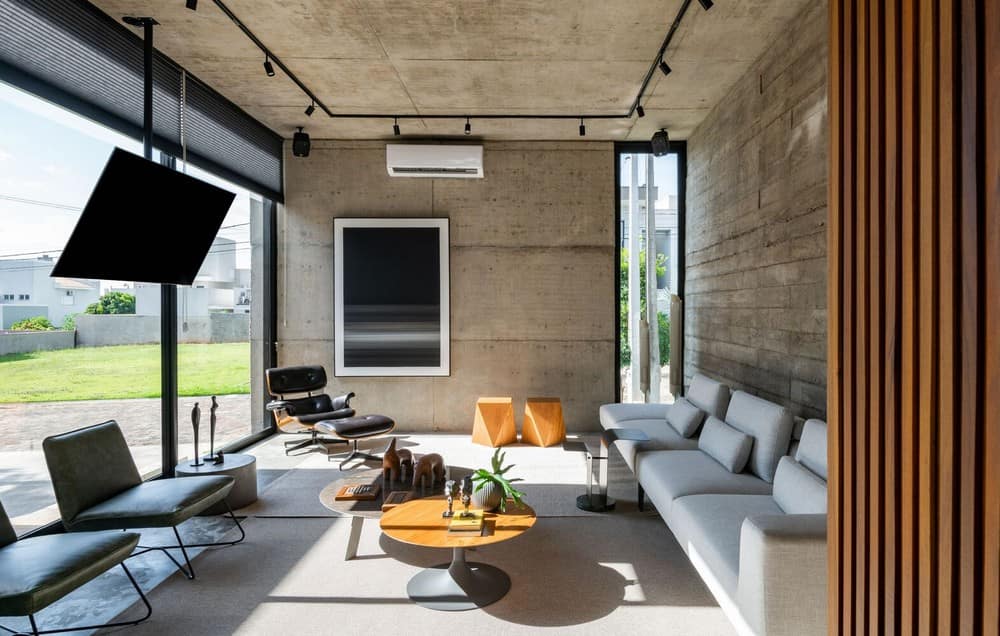
The use of concrete in the house was consciously thought out, considering not only the materiality but also the construction dynamics, architectural reasoning, and structure. The concrete was cast in place, which brought fluidity and naturalness to the project. The Araraquara Patio house is mainly composed of concrete slabs, with external enclosures of glass. The internal distribution of spaces was defined according to the need to create rooms.
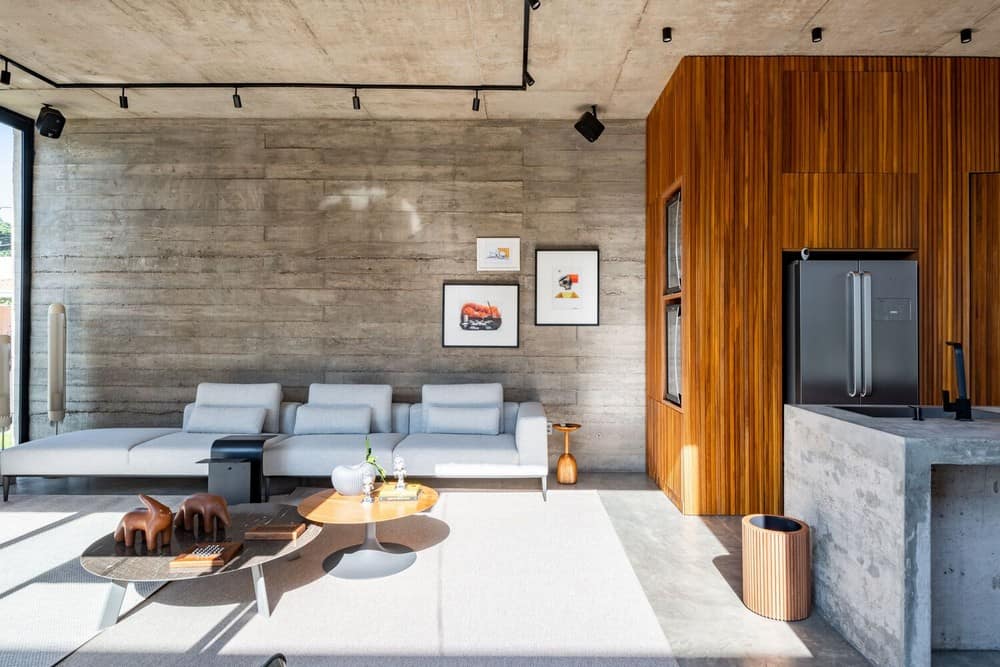
The idea of using brises in the rooms arose with the intention of creating a second atmosphere within these spaces. Since the house has no direct neighbors and is located in a wooded area of the condominium, the principle of “muxarabi” was adopted. This allows residents to enjoy the landscape by opening the curtains and windows, while those outside have difficulty seeing the interior due to the exchanged luminosity provided by the brises.
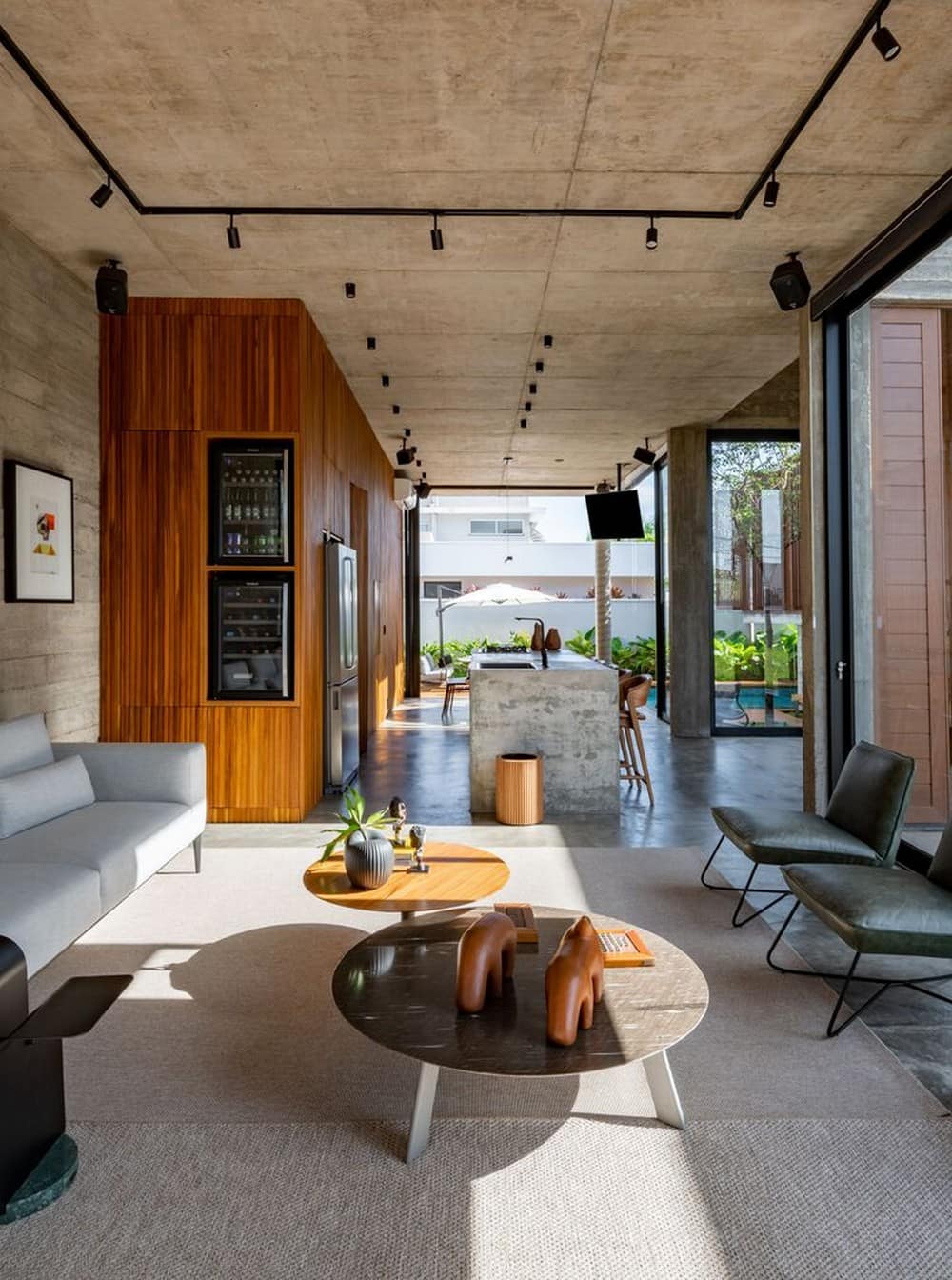
One of the highlights is the suite, which has an almost 180-degree panoramic view of the bed area. This allows residents to enjoy privacy while watching TV with the curtains open since they are not as exposed as if there were only glass without the brise. Therefore, it is in the rooms that this architectural reading is emphasized, and the brises play a fundamental role in this sense.
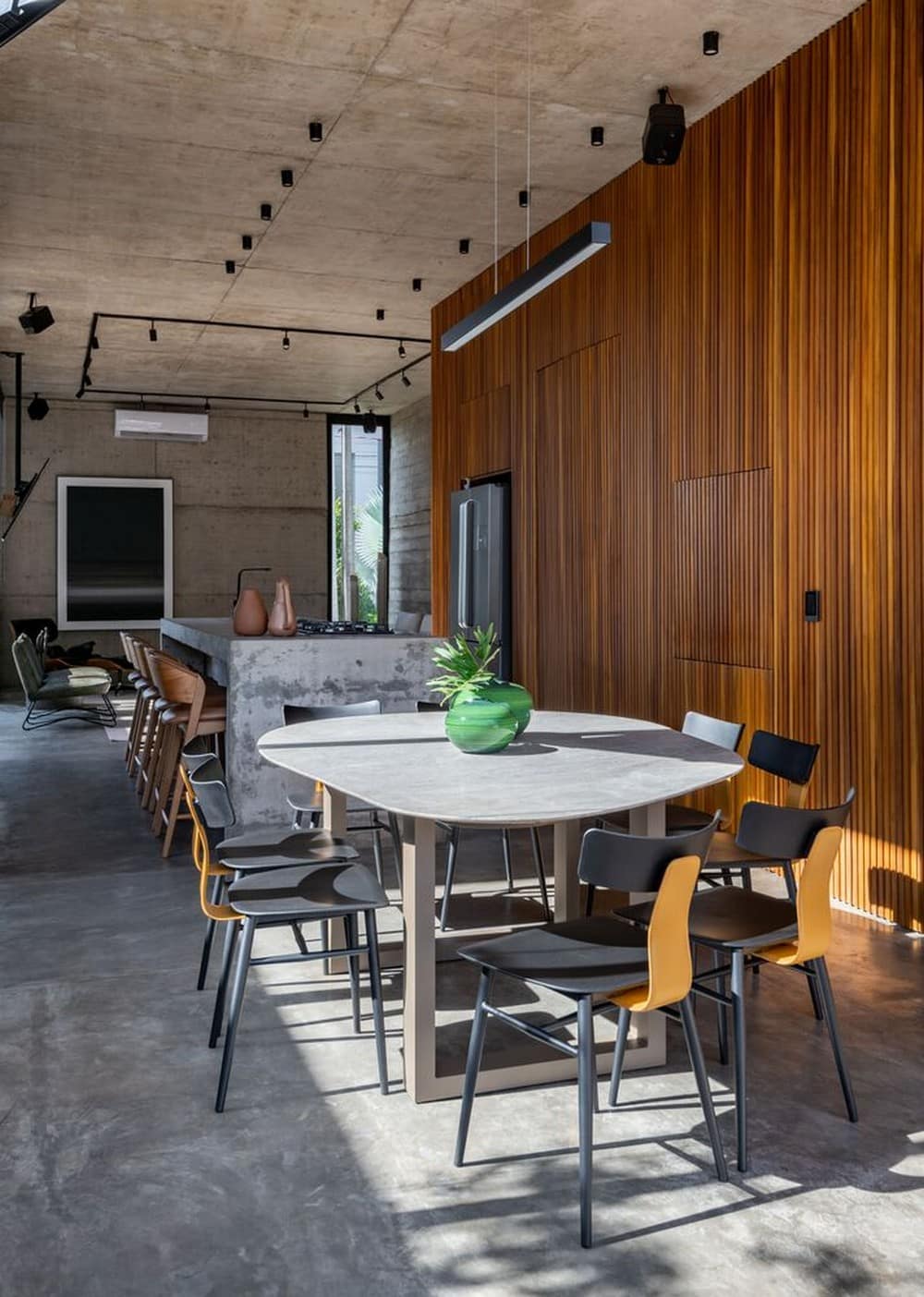
In the social area, the decision was made to leave the space open, allowing for extensive integration with the exterior. The entrance hall, which functions as the distribution center of the house, connects the basement, ground floor, and first floor. Upon entering the residence, we come across the patio, framed by the parallelism of the two blocks of the house, and featuring a white ipê tree, a deck, and the pool integrated with the suspended block.
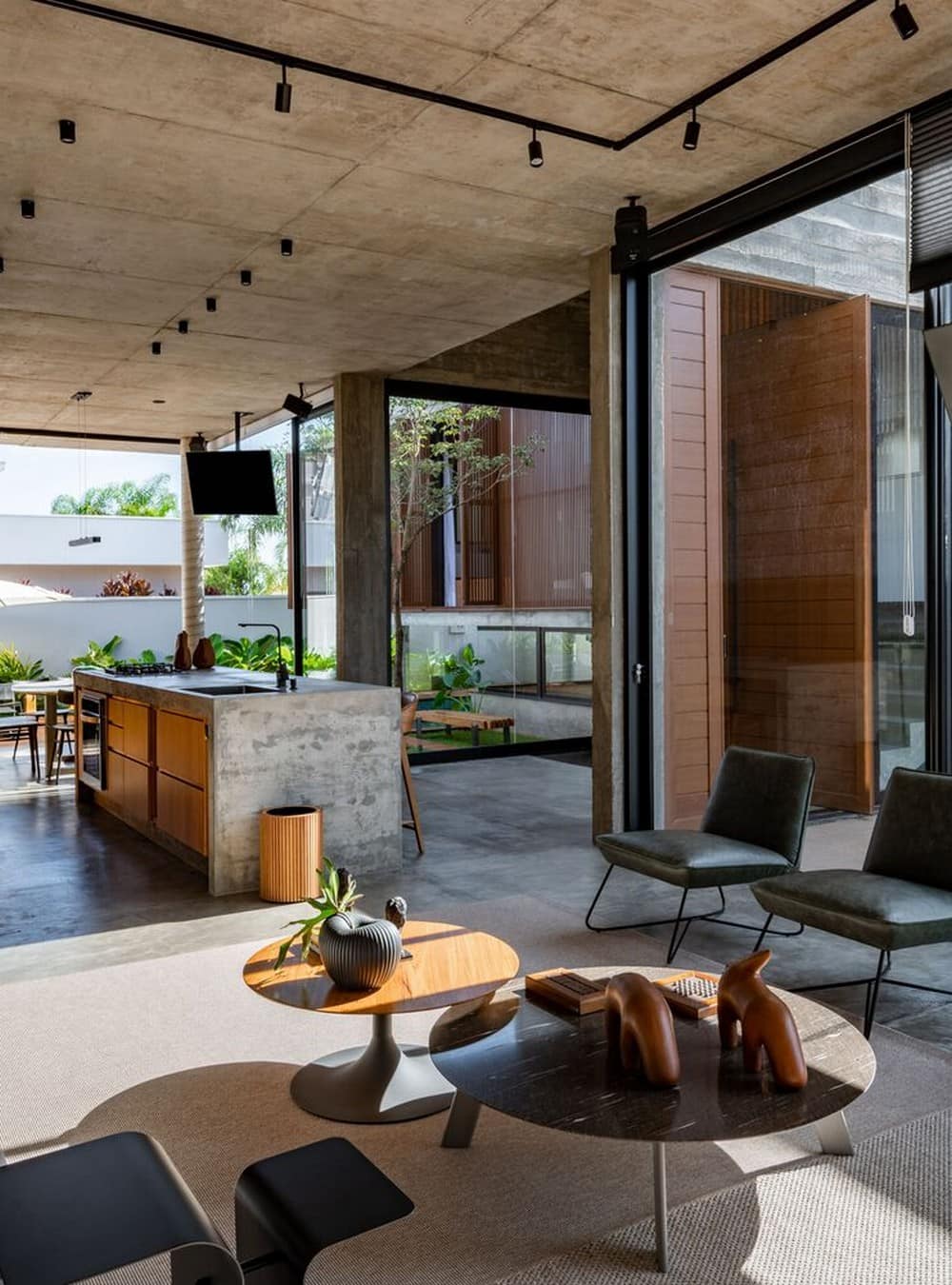
The circulation in the house is extremely dynamic, providing different ways of moving even in a traditional lot. The possibility of going up, down, forward, and backward creates a unique experience for the residents.
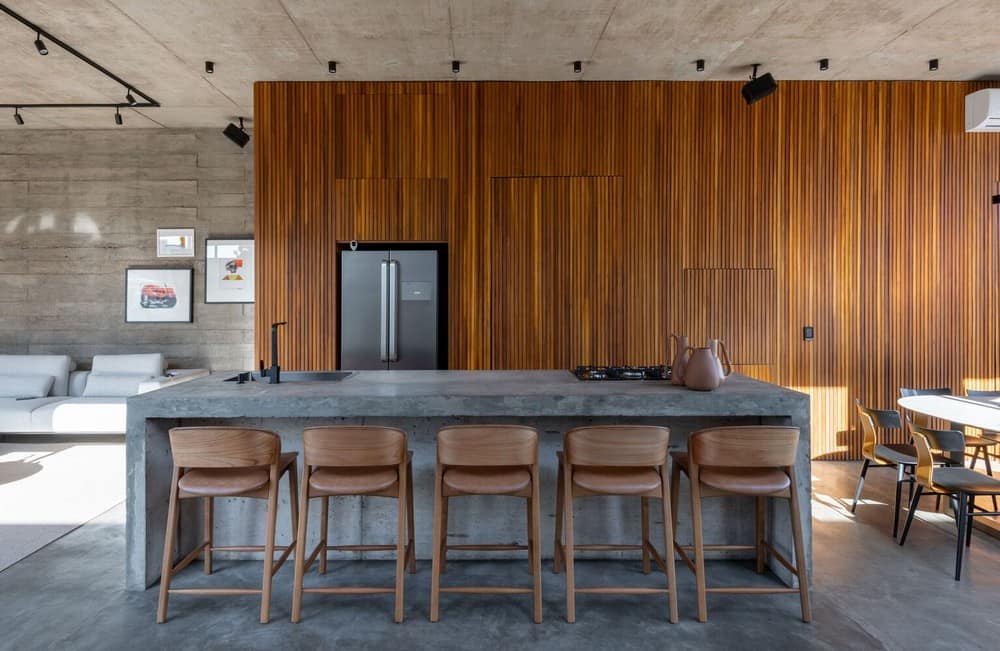
It is interesting to note that upon entering the hall, you are directed towards the center of the house. When leaving the suite towards the social area, you can appreciate the view of the patio. The privileged view provided by the slightly elevated positioning of the bedroom and the hall creates a pleasant sensation when contemplating the spaces. The focus when building a house is to create an environment that evokes sensations, perceptions, and feelings, encouraging the use of spaces. Playing with the sensory is one of the most important aspects that strengthen the residents’ appreciation for the house.
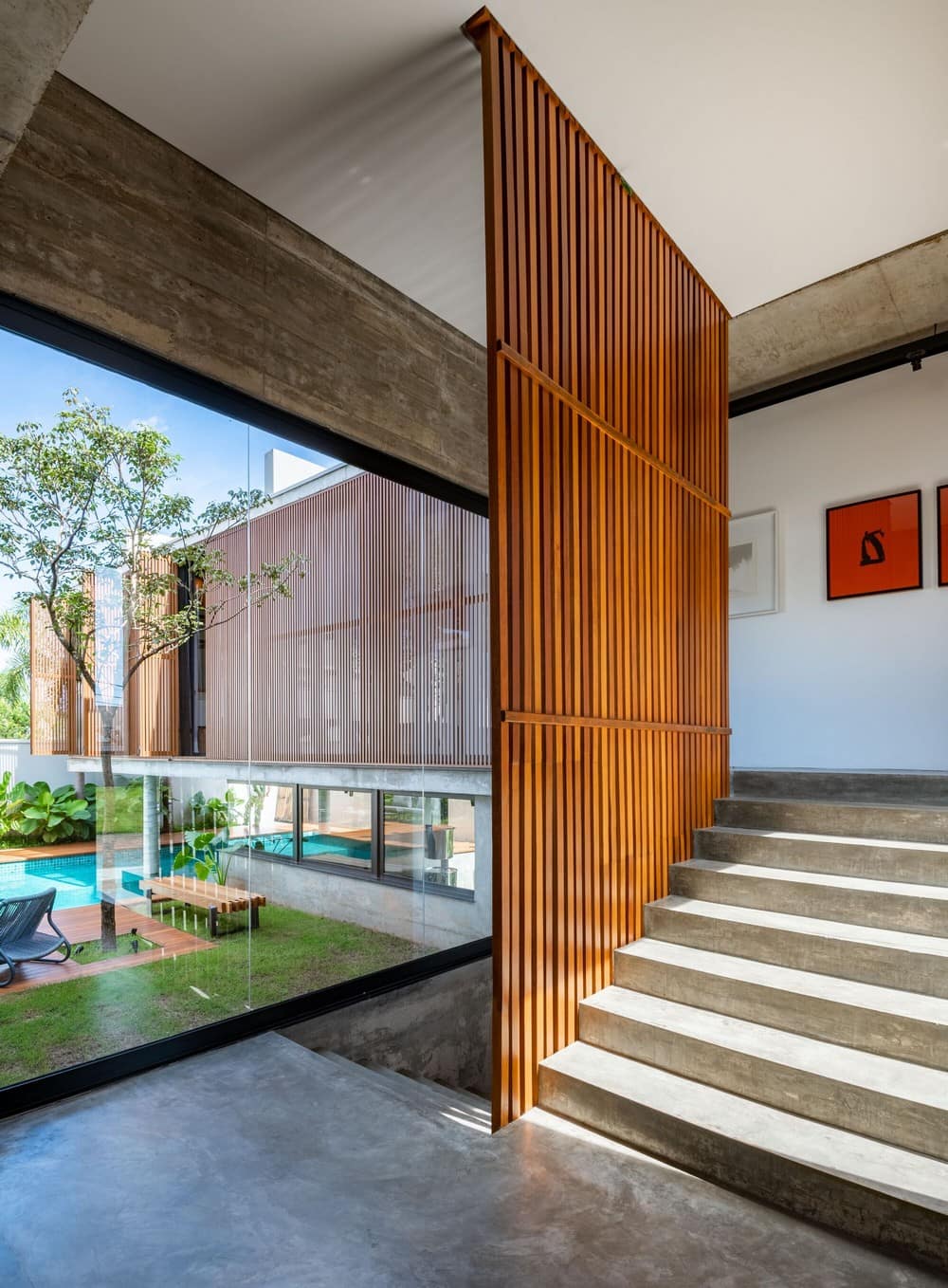
When you are in the elevated bedroom, you can admire the house in a unique and specific way. In the entrance hall, which is the point of entry for visitors, the house also offers an interesting perspective. In the living room, with the curtains open, you can appreciate the view of the street, the suspended block, the garage, and the hall. The fluidity of the Araraquara Patio house and the emphasis on contemplating the surrounding spaces provide a feeling of comfort, peace, tranquility, and rest for those present.
